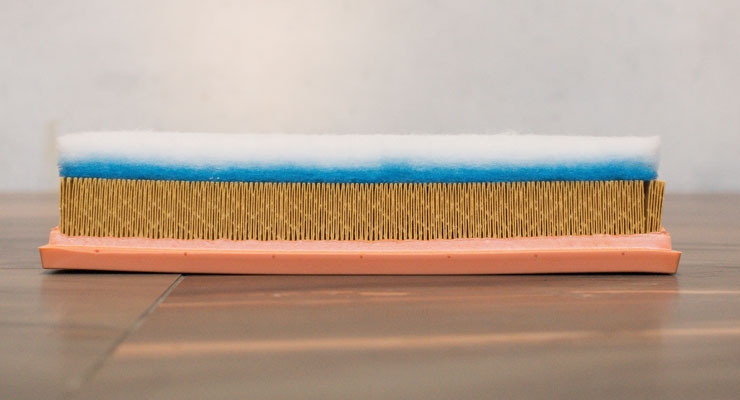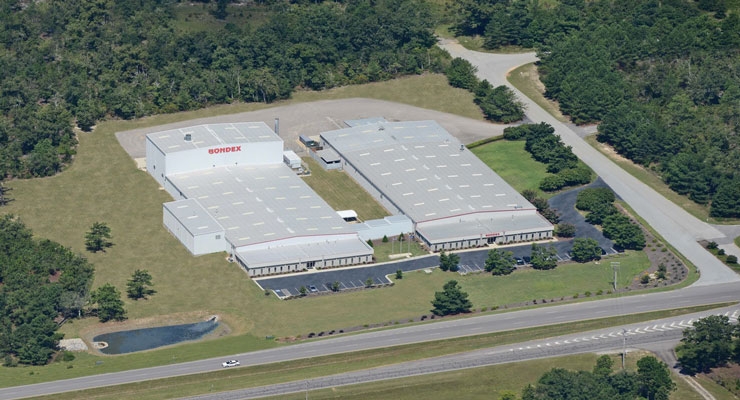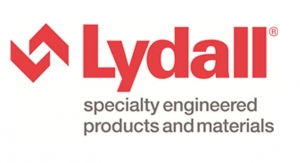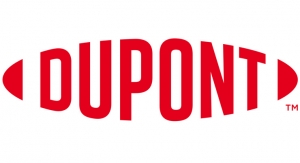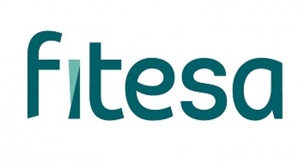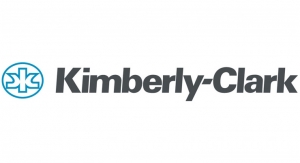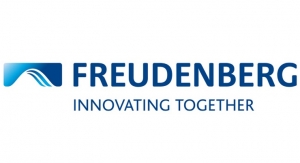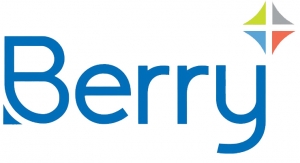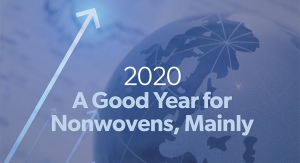Tara Olivo, Associate Editor11.07.16
The filtration market is a diverse one with seemingly endless categories. Filters allow us to cleanse the air we breathe and purify the water we drink. Filtration in the food and beverage industry removes impurities and extends the shelf life of the products we consume. Medical filters can safeguard sterile environments like operating rooms by keeping out harmful pathogens and bacteria. Filters in automotives make our vehicles more efficient. These needs, along with stringent government regulations and environmental concerns, have put the global filtration market on a path of continued growth.
According to a recent report from Grand View Research, the global filters market was valued at over $63 billion in 2015 and this number is expected to rise. Air filtration systems used in various industries, manufacturing facilities and automobiles is projected to lift growth in the market through 2024, the report states. Meanwhile, the fluid filters market has been largely impacted by the adoption of water treatment processes due to the increasing population, depletion of water resources and ground and surface water contamination.
“[We believe] that the filtration industry will continue to grow to meet the ever increasing needs in support of the global trends including the environmental crisis, more efficiency in manufacturing to meet the need of higher productivity and lower cost, and a shifting culture to accommodate increased population and urban density,” says Serkan Gogus, CEO, Mogul. “The filtration industry will provide the technology base and is vital for new products to support these global trends.”
To support this growth, the Turkish nonwovens producer has been expanding its operations at home and abroad. In January, Mogul announced the addition of a third plant in Luleburgaz, near Istanbul, which will expand its production and offerings in filtration. A new production line will feature processes for spunbond with splittable bi-component fibers (PA/PET). The new splittable spunbond, dubbed Madaline, will provide fibers of 1 micron in size. “The fibers of 1 micron will be smaller than conventional meltblown but slightly larger that nano fibers which are below 1 micron,” Gogus says. “This 1 micron fiber size of this product…thus [fills] a gap in products for the filtration industry.”
The line is expected to become operational next month.
Other new assets at Mogul include a line that will produce a cross-lapped spunlace that will be sold under its Durell brand, and expanding the capabilities of an existing Mogul bico line, supplying its Buffalo brand, that will customize filtration media specific to filtration efficiencies as per its customers requirements. Meanwhile, Mogul’s first foreign operation, a 91,000 square-ft. plant in Gray Court, SC, won’t be supplying the filtration industry when it starts up in December, but Gogus indicates future lines at the site are being considered for filtration applications.
Growth in the filtration market has also attracted new investment from Bondex, which has been producing thermally bonded nonwovens for the filtration industry for over two decades. In August, the Trenton, SC-based company expanded its capabilities in the market with the addition of a spunlace line.
According to Brian Little, Bondex’s senior vice president of sales and marketing, the technology investment by its parent company Andrew Industries was in response to demands from filter bag manufacturers. “These customers have been telling us that there is room for innovation and an opportunity to change the market by delivering material that provides much different balance of performance for the filtration application,” he says.
The spunlace asset will primarily serve the industrial dust collection filtration market. “We think there’s a need for disruptive innovation, or at least a step change in performance, and spunlace technology is much different than needled,” he says.
Spunlace will provide better uniformity, which should translate to improved filtration efficiencies at lower pressure drop; something the market has requested, according to Little.
Spunlace will also offer a more cleanable product. “Because of the nature of spunlace, we believe it is going to promote surface dust collection, which is what customers usually want,” Little says. “When the dust gets collected on the surface of the bag and is pulsed, all the dust falls off and goes to the bottom of the bag like it’s supposed to. In needled felt that dust gets buried throughout the thickness of the felt, making it harder to clean.”
While spunlace is typically used for hygiene applications at very light weights, Bondex’s use of ultra high pressure water allows it to make a heavier spunlace for the filtration industry, somewhere between 13 and 17 ounces per square yard, he adds.
The company is also experimenting with splittable fibers. With high-pressure water, one fiber will go from 10 microns in diameter to 10 fibers that are one micron each. “When you do that across every fiber in the web, all of a sudden filtration performance is exponentially higher, pore size distribution is lower, and uniformity is higher,” Little says. “The whole world of spilttable fibers will be quite new for industrial dust collection, and that’s an area we’re hoping to explore quite fully. With the way the market is today, we believe we can serve current market needs with the base benefits of spunlace, but then as we move into splittable fibers, it will be a step change level of innovation for that market.”
Also investing in the filtration market is Ahlstrom. Last month the filtration leader invested approximately €23 million ($25.2 million) in its Madisonville, KY, site which the company says will strengthen its engine and industrial filtration product capabilities.
At the time of the investment announcement, Ahlstrom’s executive vice president of business area Filtration & Performance, Fulvio Capussotti, said new state-of-the-art equipment will widen its filtration products portfolio and will strengthen its focus on North and South America. Changes at the plant will be completed in the first half of 2018.
In the spring, Ahlstrom finished modifications on its wallcoverings products line in Binzhou, China, by adding capabilities to produce filtration products. The annual capacity of the line is now roughly 20,000 metric tons of wallcovering or filtration products per year.
“The investment was made to increase the flexibility of the line and ensure we have the needed business agility,” says Noora Blasi, marketing communications manager—Filtration and Advanced Liquid Technologies, Ahlstrom. “We will continue to make every effort to stay as the global leader in filtration.”
Ahlstrom offers a range of products serving multiple industries. Applications for industrial and transportation filtration include gas turbine air intake filtration, HVAC and air pollution control, while engine filtration solutions from the Finnish company include solutions for oil, fuel, air intake and cabin air applications. “The changes in legislations and emission standards will continue to shape the developments in the filter media used in engine applications,” Blasi says.
On the F&B side, Ahlstrom recently scored a multi-year agreement for the supply of its fully compostable infusion material for single-serve coffee pods. The contract is a major breakthrough for Ahlstrom in the fast-growing North American market for single-serve coffee solutions.
Under the multi-year contract, Ahlstrom will supply its biodegradable polylactic acid-based (PLA) product made from cornstarch to Club Coffee, a Canadian roaster and packaged coffee products company. The 100% biodegradable biopolymer is combined with other natural fibers to obtain the pressure resistance properties necessary for a good quality and filtering abilities needed to block residues from passing through. Club Coffee uses the material in its award-winning PurPod100 solution.
“The needs of our customers in the food and beverage markets are affected by end-user behavior and businesses are increasingly looking for more biodegradable and compostable solutions,” says Juho Erkheikki, investor relations & financial communications manager. “This is also very much driven by global trends such as population growth, scarcity of resources and urbanization.”
Growth in Many Areas
Both nonwovens producers and converters are continuing to see growth and opportunities across a range of categories in the market.
Producers of needlepunched, spunlace, chemical bonded, air through bonded, spraybonded and thermal bonded nonwovens, TWE Group is noticing global trends lean toward more sustainable and effective filter media.
The German producer is responding to this trend by developing filtration textiles through customized processes and equipment, while also focusing on a more environmentally friendly use of filtration products made of long living and energy saving material structures.
“We see big capabilities to meet the requirements of the market by especially thin nonwoven products, new gradient designs and innovative material combinations,” says Doreen Halbauer, business unit director Filtration, TWE Group. “We support our customers consequently to develop energy saving ecological filter elements.”
TWE is reducing its carbon footprint by using high quality polyester fibers from recycled raw materials like flakes made from post-consumer PET bottles. “At TWE Bocholt we saved more than 200,000 gigajoules of energy and more than 5000 tons of oil in three years by using fibers of bottle flakes,” says Elke Schmalz, team leader R&D.
The nonwovens producer has also focused on designing filter media that demonstrate lower pressure differences over the complete filter lifetime. According to TWE, half of a building’s energy consumption is for HVAC, and 30% of that amount is directly related to air filter pressure difference. Therefore the company has developed new dust storage layers—media with well-coordinated layer constructions and stiffness. “We achieved with our developments very slow pressure difference increases and long lifetimes by optimized dust deposition,” Schmalz says.
Another innovative material combination includes a new portfolio of storage layers for vacuum cleaner bags based on different market requirements. TWE is offering layers with incorporated fine fibers, open voluminous media with very low pressure differences and “green media” such as media of recycled fibers, according to Schmalz.
Back in the U.S., Superior Felt & Filtration (SFF), a McHenry, IL-based manufacturer, distributor and converter of filtration products, is finding other sources of growth in the filtration market.
Some recent developments from the company include multi-layer composites for wound care, cosmetic and biohazard clean up, allowing its customers the flexibility to utilize different phobic barriers, absorbent interior soaker pads and phillic layers—vital to medical and even industrial applications, according to Frank Porto, SFF’s director of sales.
Also in the medical realm, SFF’s ability to utilize over-molded plastics and rubber extrusions adds value to medical filtration concepts by preventing leakage and providing more robust end products. “This plus the capability to design, manufacture and private label package a variety of sub micron face masks, respirators and other medical finished filters is advantageous in this growing market,” Porto adds.
To better serve its customers and support current market needs, the converter has invested in new ultrasonic welding equipment, lamination equipment, high capacity die cutting, high tonnage die cutting for large sizes, and kiss cutting for tapes/adhesive backed media.
Meanwhile, Roberto García, Filtration sales manager of Piera, Barcelona, Spain-based nonwovens producer Tefisa sees liquid filtration as a key area fueling growth in the filtration industry. “Due to higher global contamination, there is a growing demand in the market for efficient filters that reduce the weight of car parts and reduce fuel consumption,” he says.
Tefisa, which produces chemical bonded nonwovens at plants in Barcelona and Ystad, Sweden, specializes in media for liquid filtration such as coolants and wastewater applications, and has a small stake in specific in air filtration applications.
As the filtration market continues to grow globally, García says Tefisa is continuously investing in new products and manufacturing processes to offer its customers high quality and efficient filter media.
Filter Innovators
Great Lakes Filters, a Michigan-based converter of nonwoven and woven filtration textiles, is currently beta testing a new breakthrough in the function and efficacy of standard filtration textiles.
Its exclusive innovation OxiPur, utilizing polymeric N-halamine technology, will change filtration for malodors and give manufacturing and process engineers a highly efficient and economical method for treating their long standing malodor issues, according to Matt Utley, president of Great Lakes Filters. “The utilization of polymer N-halamine compounds for use in destroying noxious agents susceptible to chemical oxidation has been successfully proven in university laboratories,” he says. “The main obstacle has been creating a method that is commercially viable. OxiPur has taken this technology out of the university laboratories and into the industrial marketplace.”
OxiPur filtration media and textiles utilize a water soluble polymeric layer. This nano thin (300-400nm) layer/coating immobilizes the N-halamine (a compound that contains halogen atoms) and is cured to the surface of the OxiPur filtration media. Utley says this creates a coating with halogen atoms that are chemically bound in the N-halamine. As fluid passes through the OxiPur media, noxious odor is eliminated by inactivating microorganisms upon contact. Enzymes used by microbes are inhibited, halting catalytic enzymology, thus eliminating the generation of malodors that enzymes generate on organic substrates.
“Volatile organic sulfur compounds (VOSC) can be treated effectively and economically,” Utley says. “OxiPur’s potent neutralizing effects can be used against a broad range of odor-related molecules, like hydrogen sulfide, mercaptans and alkyl sulfides. With industrial aqueous system where biological and biofilm control is needed, OxiPur will destroy the matrix and inactivate the bacteria inside the biofilm without the strong odor of free chlorine or the gas phase corrosiveness that free chlorine produces.”
Utley says the company is continuing to find additional benefits and applications for this new technology.
Meanwhile, Mogul has delivered several new products in response to growth and trends in the market. In April, the company launched PBT (polybutylene terephthalate) meltblown technology to increase its offerings to the liquid and gas filtration markets. “PBT finds extensive use in transportation vehicles and heavy equipment as a filter media for hot and aggressive liquids such as hydrocarbon fuels and oil,” Gogus says. “Unlike PP, which absorbs hydrocarbons and swells, PBT functions well in hydrocarbons. PBT is also used in equipment to filter lubricants and coolants and for gaseous applications such as crankcase ventilation.”
Also expanding Mogul’s meltblown portfolio is Elastex, a polyester-based thermoplastic polyurethane (TPU) meltblown with unique elasticity properties. Elastex is resistant to abrasion, oil, grease puncture, aging and UV, and can be used in filtration applications where finer fibers are required to achieve the desired filtration efficiency similar to polypropylene or polybutylene terephthalate meltblown.
Fire retardant spunbond polyester is another new innovation from Mogul. Made with trilobal fibers, the FR additive is made within the polymer, therefore maintaining functionality longer than topically applied additives, Gogus says. The FR resistant polyester media is used in filtration applications where enhanced FR performance is required such as in some micro glass composites as a supporting scrim. “Support scrims of non-FR products can reduce the overall performance of a filtration composite whereas Mogul’s FR resistance media is designed to enhance the FR performance,” he adds.
Filtration Consolidation
Manchester, CT-based Lydall Inc., which expanded its global footprint and technological prowess with the purchase of Andrew Industries’ industrial filtration business two years ago, continued to grow its operations this year with the acquisition of Canadian needlepunch manufacturer Texel for approximately $96 million in cash.
Serving geosynthetics, liquid filtration and other industrial segments, Texel’s business consists of three manufacturing operations and one distribution center in Quebec. These assets will become part of Lydall’s Industrial Filtration operating segment, established following the acquisition of Andrew’s needlepunch business, which will be renamed Technical Nonwovens.
“As a result of the 2014 purchase of our Industrial Filtration business, we have gained valuable experience and confidence in acquiring and integrating a business,” president and CEO Dale Barnhardt said at the time of the acquisition. “That integration was completed successfully and we expect the same level of success for this acquisition.”
During Lydall’s second quarter conference call, Barnhardt told investors that the Texel business diversifies the company into attractive adjacent markets focused on technical nonwovens with a leading brand. “In addition, it provides Lydall with an opportunity to leverage our existing manufacturing capabilities and expertise in order to support future growth as this business uses the exact needlepunch manufacturing process and capabilities we are skilled at within our Industrial Filtration segment,” he continued.
Barnhardt also informed investors that acquisitions will continue to be on Lydall’s radar. “As I have mentioned before, even with this recent acquisition, both for a financial and organizational resource perspective, we have the means, the wherewithal and desire to execute additional acquisitions. I can assure you that as these materialize, we will continue to take a disciplined approach as we demonstrated with the acquisitions of Industrial Filtration and Texel.”
Texel’s business unit manager Jean Girard says Lydall’s expertise will fuel product development in composites, where Texel’s needlepunch nonwovens will be joined with materials “in the never-ending quest to improve filtration.” On the other hand, Texel’s Triboelectric filter media, which is ideally suited in filtering very fine particles at a low pressure drop, will fill a void in Lydall’s product portfolio, he says.
Girard adds that the recent flurry of acquisitions, restructuring and globalization in the filtration market has changed the business landscape, and these changes have had an impact on the way Texel has conducted business while also creating opportunities. “New standards are being implemented in different market sectors that are forcing a re-thinking of the filter media used to meet them,” he says. “We are uniquely positioned to meet them as part of a group like Lydall.”
Lydall expects Texel to be fully integrated by 2018.
According to a recent report from Grand View Research, the global filters market was valued at over $63 billion in 2015 and this number is expected to rise. Air filtration systems used in various industries, manufacturing facilities and automobiles is projected to lift growth in the market through 2024, the report states. Meanwhile, the fluid filters market has been largely impacted by the adoption of water treatment processes due to the increasing population, depletion of water resources and ground and surface water contamination.
“[We believe] that the filtration industry will continue to grow to meet the ever increasing needs in support of the global trends including the environmental crisis, more efficiency in manufacturing to meet the need of higher productivity and lower cost, and a shifting culture to accommodate increased population and urban density,” says Serkan Gogus, CEO, Mogul. “The filtration industry will provide the technology base and is vital for new products to support these global trends.”
To support this growth, the Turkish nonwovens producer has been expanding its operations at home and abroad. In January, Mogul announced the addition of a third plant in Luleburgaz, near Istanbul, which will expand its production and offerings in filtration. A new production line will feature processes for spunbond with splittable bi-component fibers (PA/PET). The new splittable spunbond, dubbed Madaline, will provide fibers of 1 micron in size. “The fibers of 1 micron will be smaller than conventional meltblown but slightly larger that nano fibers which are below 1 micron,” Gogus says. “This 1 micron fiber size of this product…thus [fills] a gap in products for the filtration industry.”
The line is expected to become operational next month.
Other new assets at Mogul include a line that will produce a cross-lapped spunlace that will be sold under its Durell brand, and expanding the capabilities of an existing Mogul bico line, supplying its Buffalo brand, that will customize filtration media specific to filtration efficiencies as per its customers requirements. Meanwhile, Mogul’s first foreign operation, a 91,000 square-ft. plant in Gray Court, SC, won’t be supplying the filtration industry when it starts up in December, but Gogus indicates future lines at the site are being considered for filtration applications.
Growth in the filtration market has also attracted new investment from Bondex, which has been producing thermally bonded nonwovens for the filtration industry for over two decades. In August, the Trenton, SC-based company expanded its capabilities in the market with the addition of a spunlace line.
According to Brian Little, Bondex’s senior vice president of sales and marketing, the technology investment by its parent company Andrew Industries was in response to demands from filter bag manufacturers. “These customers have been telling us that there is room for innovation and an opportunity to change the market by delivering material that provides much different balance of performance for the filtration application,” he says.
The spunlace asset will primarily serve the industrial dust collection filtration market. “We think there’s a need for disruptive innovation, or at least a step change in performance, and spunlace technology is much different than needled,” he says.
Spunlace will provide better uniformity, which should translate to improved filtration efficiencies at lower pressure drop; something the market has requested, according to Little.
Spunlace will also offer a more cleanable product. “Because of the nature of spunlace, we believe it is going to promote surface dust collection, which is what customers usually want,” Little says. “When the dust gets collected on the surface of the bag and is pulsed, all the dust falls off and goes to the bottom of the bag like it’s supposed to. In needled felt that dust gets buried throughout the thickness of the felt, making it harder to clean.”
While spunlace is typically used for hygiene applications at very light weights, Bondex’s use of ultra high pressure water allows it to make a heavier spunlace for the filtration industry, somewhere between 13 and 17 ounces per square yard, he adds.
The company is also experimenting with splittable fibers. With high-pressure water, one fiber will go from 10 microns in diameter to 10 fibers that are one micron each. “When you do that across every fiber in the web, all of a sudden filtration performance is exponentially higher, pore size distribution is lower, and uniformity is higher,” Little says. “The whole world of spilttable fibers will be quite new for industrial dust collection, and that’s an area we’re hoping to explore quite fully. With the way the market is today, we believe we can serve current market needs with the base benefits of spunlace, but then as we move into splittable fibers, it will be a step change level of innovation for that market.”
Also investing in the filtration market is Ahlstrom. Last month the filtration leader invested approximately €23 million ($25.2 million) in its Madisonville, KY, site which the company says will strengthen its engine and industrial filtration product capabilities.
At the time of the investment announcement, Ahlstrom’s executive vice president of business area Filtration & Performance, Fulvio Capussotti, said new state-of-the-art equipment will widen its filtration products portfolio and will strengthen its focus on North and South America. Changes at the plant will be completed in the first half of 2018.
In the spring, Ahlstrom finished modifications on its wallcoverings products line in Binzhou, China, by adding capabilities to produce filtration products. The annual capacity of the line is now roughly 20,000 metric tons of wallcovering or filtration products per year.
“The investment was made to increase the flexibility of the line and ensure we have the needed business agility,” says Noora Blasi, marketing communications manager—Filtration and Advanced Liquid Technologies, Ahlstrom. “We will continue to make every effort to stay as the global leader in filtration.”
Ahlstrom offers a range of products serving multiple industries. Applications for industrial and transportation filtration include gas turbine air intake filtration, HVAC and air pollution control, while engine filtration solutions from the Finnish company include solutions for oil, fuel, air intake and cabin air applications. “The changes in legislations and emission standards will continue to shape the developments in the filter media used in engine applications,” Blasi says.
On the F&B side, Ahlstrom recently scored a multi-year agreement for the supply of its fully compostable infusion material for single-serve coffee pods. The contract is a major breakthrough for Ahlstrom in the fast-growing North American market for single-serve coffee solutions.
Under the multi-year contract, Ahlstrom will supply its biodegradable polylactic acid-based (PLA) product made from cornstarch to Club Coffee, a Canadian roaster and packaged coffee products company. The 100% biodegradable biopolymer is combined with other natural fibers to obtain the pressure resistance properties necessary for a good quality and filtering abilities needed to block residues from passing through. Club Coffee uses the material in its award-winning PurPod100 solution.
“The needs of our customers in the food and beverage markets are affected by end-user behavior and businesses are increasingly looking for more biodegradable and compostable solutions,” says Juho Erkheikki, investor relations & financial communications manager. “This is also very much driven by global trends such as population growth, scarcity of resources and urbanization.”
Growth in Many Areas
Both nonwovens producers and converters are continuing to see growth and opportunities across a range of categories in the market.
Producers of needlepunched, spunlace, chemical bonded, air through bonded, spraybonded and thermal bonded nonwovens, TWE Group is noticing global trends lean toward more sustainable and effective filter media.
The German producer is responding to this trend by developing filtration textiles through customized processes and equipment, while also focusing on a more environmentally friendly use of filtration products made of long living and energy saving material structures.
“We see big capabilities to meet the requirements of the market by especially thin nonwoven products, new gradient designs and innovative material combinations,” says Doreen Halbauer, business unit director Filtration, TWE Group. “We support our customers consequently to develop energy saving ecological filter elements.”
TWE is reducing its carbon footprint by using high quality polyester fibers from recycled raw materials like flakes made from post-consumer PET bottles. “At TWE Bocholt we saved more than 200,000 gigajoules of energy and more than 5000 tons of oil in three years by using fibers of bottle flakes,” says Elke Schmalz, team leader R&D.
The nonwovens producer has also focused on designing filter media that demonstrate lower pressure differences over the complete filter lifetime. According to TWE, half of a building’s energy consumption is for HVAC, and 30% of that amount is directly related to air filter pressure difference. Therefore the company has developed new dust storage layers—media with well-coordinated layer constructions and stiffness. “We achieved with our developments very slow pressure difference increases and long lifetimes by optimized dust deposition,” Schmalz says.
Another innovative material combination includes a new portfolio of storage layers for vacuum cleaner bags based on different market requirements. TWE is offering layers with incorporated fine fibers, open voluminous media with very low pressure differences and “green media” such as media of recycled fibers, according to Schmalz.
Back in the U.S., Superior Felt & Filtration (SFF), a McHenry, IL-based manufacturer, distributor and converter of filtration products, is finding other sources of growth in the filtration market.
Some recent developments from the company include multi-layer composites for wound care, cosmetic and biohazard clean up, allowing its customers the flexibility to utilize different phobic barriers, absorbent interior soaker pads and phillic layers—vital to medical and even industrial applications, according to Frank Porto, SFF’s director of sales.
Also in the medical realm, SFF’s ability to utilize over-molded plastics and rubber extrusions adds value to medical filtration concepts by preventing leakage and providing more robust end products. “This plus the capability to design, manufacture and private label package a variety of sub micron face masks, respirators and other medical finished filters is advantageous in this growing market,” Porto adds.
To better serve its customers and support current market needs, the converter has invested in new ultrasonic welding equipment, lamination equipment, high capacity die cutting, high tonnage die cutting for large sizes, and kiss cutting for tapes/adhesive backed media.
Meanwhile, Roberto García, Filtration sales manager of Piera, Barcelona, Spain-based nonwovens producer Tefisa sees liquid filtration as a key area fueling growth in the filtration industry. “Due to higher global contamination, there is a growing demand in the market for efficient filters that reduce the weight of car parts and reduce fuel consumption,” he says.
Tefisa, which produces chemical bonded nonwovens at plants in Barcelona and Ystad, Sweden, specializes in media for liquid filtration such as coolants and wastewater applications, and has a small stake in specific in air filtration applications.
As the filtration market continues to grow globally, García says Tefisa is continuously investing in new products and manufacturing processes to offer its customers high quality and efficient filter media.
Filter Innovators
Great Lakes Filters, a Michigan-based converter of nonwoven and woven filtration textiles, is currently beta testing a new breakthrough in the function and efficacy of standard filtration textiles.
Its exclusive innovation OxiPur, utilizing polymeric N-halamine technology, will change filtration for malodors and give manufacturing and process engineers a highly efficient and economical method for treating their long standing malodor issues, according to Matt Utley, president of Great Lakes Filters. “The utilization of polymer N-halamine compounds for use in destroying noxious agents susceptible to chemical oxidation has been successfully proven in university laboratories,” he says. “The main obstacle has been creating a method that is commercially viable. OxiPur has taken this technology out of the university laboratories and into the industrial marketplace.”
OxiPur filtration media and textiles utilize a water soluble polymeric layer. This nano thin (300-400nm) layer/coating immobilizes the N-halamine (a compound that contains halogen atoms) and is cured to the surface of the OxiPur filtration media. Utley says this creates a coating with halogen atoms that are chemically bound in the N-halamine. As fluid passes through the OxiPur media, noxious odor is eliminated by inactivating microorganisms upon contact. Enzymes used by microbes are inhibited, halting catalytic enzymology, thus eliminating the generation of malodors that enzymes generate on organic substrates.
“Volatile organic sulfur compounds (VOSC) can be treated effectively and economically,” Utley says. “OxiPur’s potent neutralizing effects can be used against a broad range of odor-related molecules, like hydrogen sulfide, mercaptans and alkyl sulfides. With industrial aqueous system where biological and biofilm control is needed, OxiPur will destroy the matrix and inactivate the bacteria inside the biofilm without the strong odor of free chlorine or the gas phase corrosiveness that free chlorine produces.”
Utley says the company is continuing to find additional benefits and applications for this new technology.
Meanwhile, Mogul has delivered several new products in response to growth and trends in the market. In April, the company launched PBT (polybutylene terephthalate) meltblown technology to increase its offerings to the liquid and gas filtration markets. “PBT finds extensive use in transportation vehicles and heavy equipment as a filter media for hot and aggressive liquids such as hydrocarbon fuels and oil,” Gogus says. “Unlike PP, which absorbs hydrocarbons and swells, PBT functions well in hydrocarbons. PBT is also used in equipment to filter lubricants and coolants and for gaseous applications such as crankcase ventilation.”
Also expanding Mogul’s meltblown portfolio is Elastex, a polyester-based thermoplastic polyurethane (TPU) meltblown with unique elasticity properties. Elastex is resistant to abrasion, oil, grease puncture, aging and UV, and can be used in filtration applications where finer fibers are required to achieve the desired filtration efficiency similar to polypropylene or polybutylene terephthalate meltblown.
Fire retardant spunbond polyester is another new innovation from Mogul. Made with trilobal fibers, the FR additive is made within the polymer, therefore maintaining functionality longer than topically applied additives, Gogus says. The FR resistant polyester media is used in filtration applications where enhanced FR performance is required such as in some micro glass composites as a supporting scrim. “Support scrims of non-FR products can reduce the overall performance of a filtration composite whereas Mogul’s FR resistance media is designed to enhance the FR performance,” he adds.
Filtration Consolidation
Manchester, CT-based Lydall Inc., which expanded its global footprint and technological prowess with the purchase of Andrew Industries’ industrial filtration business two years ago, continued to grow its operations this year with the acquisition of Canadian needlepunch manufacturer Texel for approximately $96 million in cash.
Serving geosynthetics, liquid filtration and other industrial segments, Texel’s business consists of three manufacturing operations and one distribution center in Quebec. These assets will become part of Lydall’s Industrial Filtration operating segment, established following the acquisition of Andrew’s needlepunch business, which will be renamed Technical Nonwovens.
“As a result of the 2014 purchase of our Industrial Filtration business, we have gained valuable experience and confidence in acquiring and integrating a business,” president and CEO Dale Barnhardt said at the time of the acquisition. “That integration was completed successfully and we expect the same level of success for this acquisition.”
During Lydall’s second quarter conference call, Barnhardt told investors that the Texel business diversifies the company into attractive adjacent markets focused on technical nonwovens with a leading brand. “In addition, it provides Lydall with an opportunity to leverage our existing manufacturing capabilities and expertise in order to support future growth as this business uses the exact needlepunch manufacturing process and capabilities we are skilled at within our Industrial Filtration segment,” he continued.
Barnhardt also informed investors that acquisitions will continue to be on Lydall’s radar. “As I have mentioned before, even with this recent acquisition, both for a financial and organizational resource perspective, we have the means, the wherewithal and desire to execute additional acquisitions. I can assure you that as these materialize, we will continue to take a disciplined approach as we demonstrated with the acquisitions of Industrial Filtration and Texel.”
Texel’s business unit manager Jean Girard says Lydall’s expertise will fuel product development in composites, where Texel’s needlepunch nonwovens will be joined with materials “in the never-ending quest to improve filtration.” On the other hand, Texel’s Triboelectric filter media, which is ideally suited in filtering very fine particles at a low pressure drop, will fill a void in Lydall’s product portfolio, he says.
Girard adds that the recent flurry of acquisitions, restructuring and globalization in the filtration market has changed the business landscape, and these changes have had an impact on the way Texel has conducted business while also creating opportunities. “New standards are being implemented in different market sectors that are forcing a re-thinking of the filter media used to meet them,” he says. “We are uniquely positioned to meet them as part of a group like Lydall.”
Lydall expects Texel to be fully integrated by 2018.

